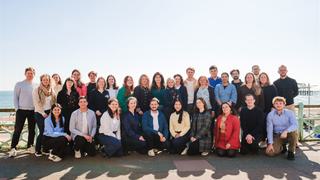Who we are
We are experts in finance, climate, data, and business. And we believe that getting finance to the right places is the fastest, most effective way to meet global climate goals.
The world is complex, as are the systems and forces that lie behind the climate crisis and its solutions.

We are here to join the dots, so financial decision makers can feel confident about investing in climate action.

To achieve this, we forge the clearest pathways, conduct the right analysis, and build the necessary capacity.
1
Pathways
2
Analysis
3
Capacity
Everything we do is backed by science and closely informed by our network of expert partners. We are just one part of a much wider ecosystem working towards the same goal of fast, impactful climate action.
Climate Arc, Inc. is a US nonprofit corporation and a 501(c)(3) public charity (EIN 93-2684544).
Climate Arc UK Limited, a U.K. limited company, is a wholly-owned subsidiary of Climate Arc and is treated as a disregarded entity for U.S. tax purposes.




